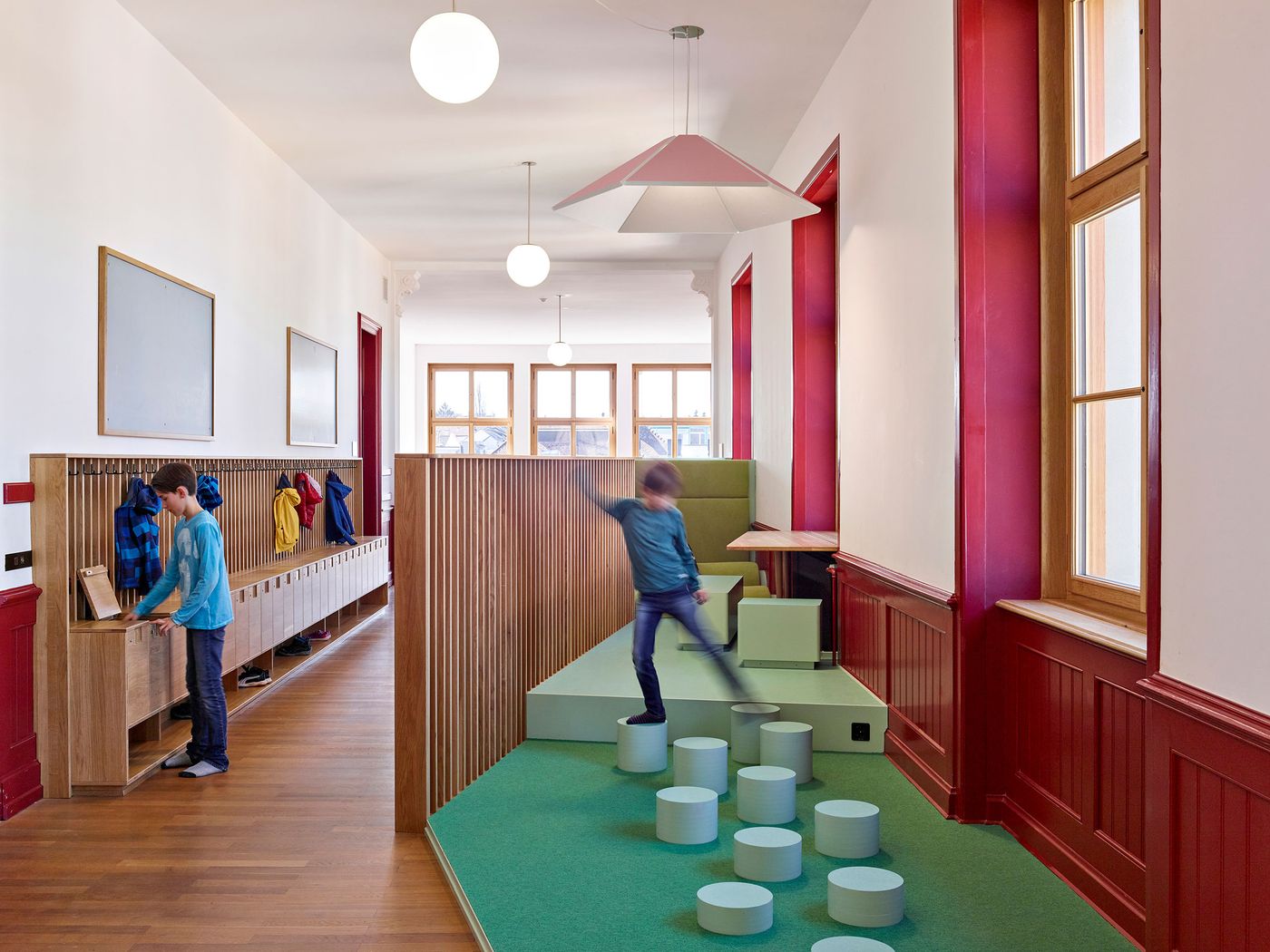
ZMIK Endows a Historic Building in Basel with Playful Learning Spaces
Words by Eric David
Location
Basel, Switzerland
ZMIK Endows a Historic Building in Basel with Playful Learning Spaces
Words by Eric David
Basel, Switzerland
Basel, Switzerland
Location
Contemporary school design has moved away from the traditional blueprint of identical, single-use classrooms embracing instead more fluid layouts and multi-functional spaces. This is all well and good for new educational projects but what about the existing school fabric? Enter Swiss design studio ZMIK whose latest endeavour, “Learning Scapes”, showcases the power of design to create modern learning environments even in age-old historic buildings like St. Johann primary school in Basel, Switzerland, which was built in the 1880s in the Neo-Renaissance style. Playfully integrated into the school’s historic building fabric, ZMIK’s intervention has transformed three corridors into open-plan, hybrid learning and recreation areas that cater to multiple types of pedagogy, from group exercises to individual work, and from activity-based learning to reading and discussions.
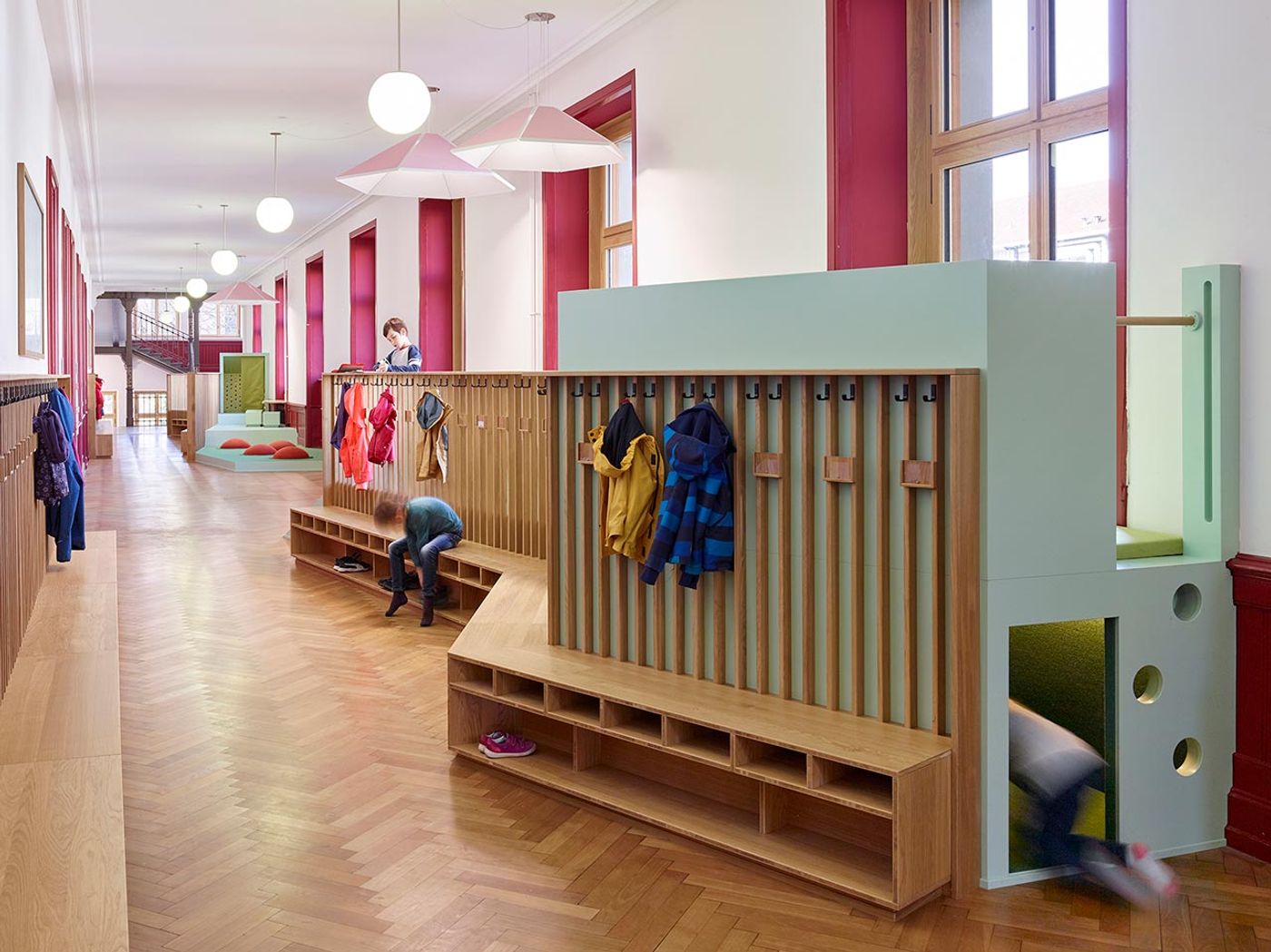
Photo © WEISSWERT.
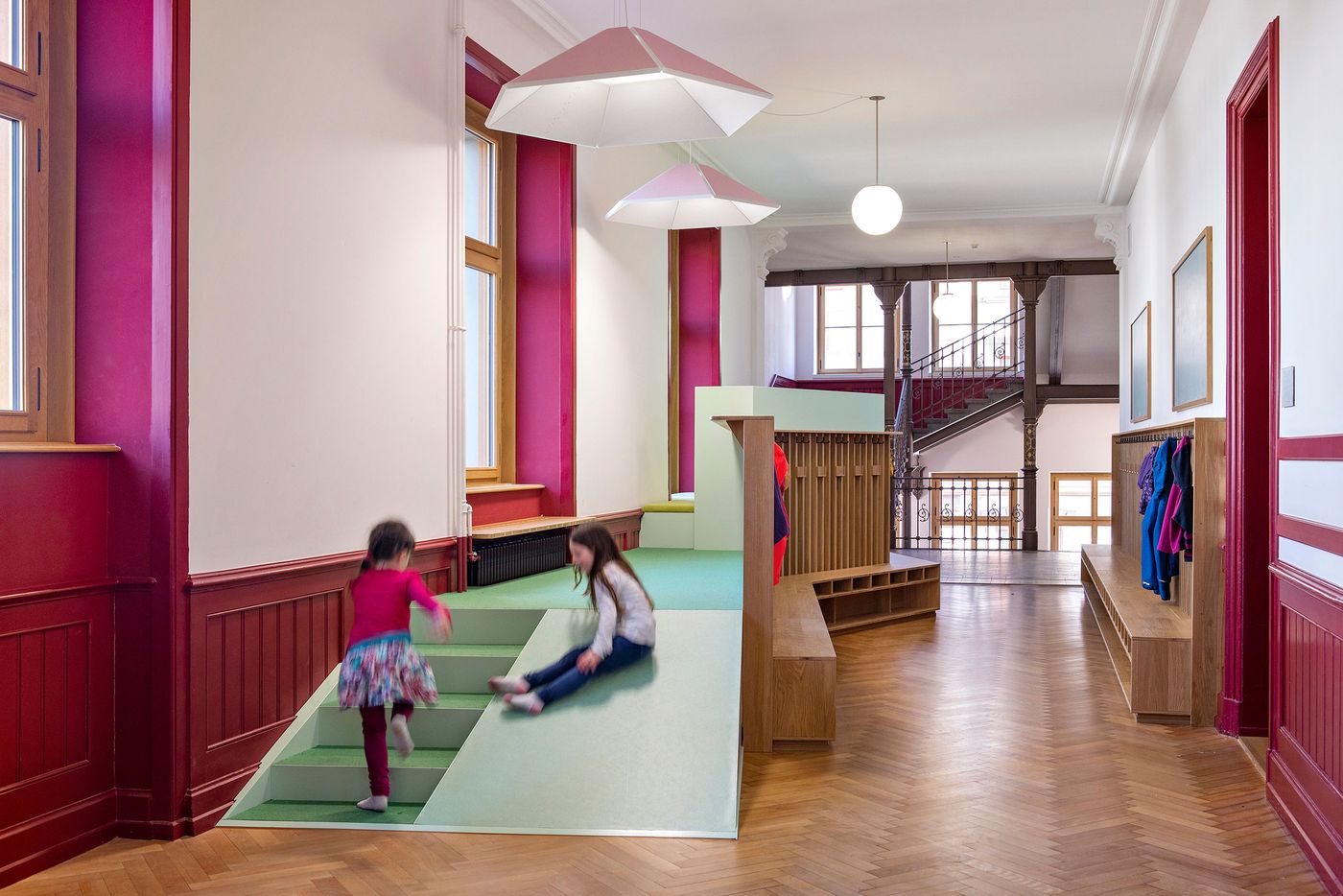
Photo © WEISSWERT.
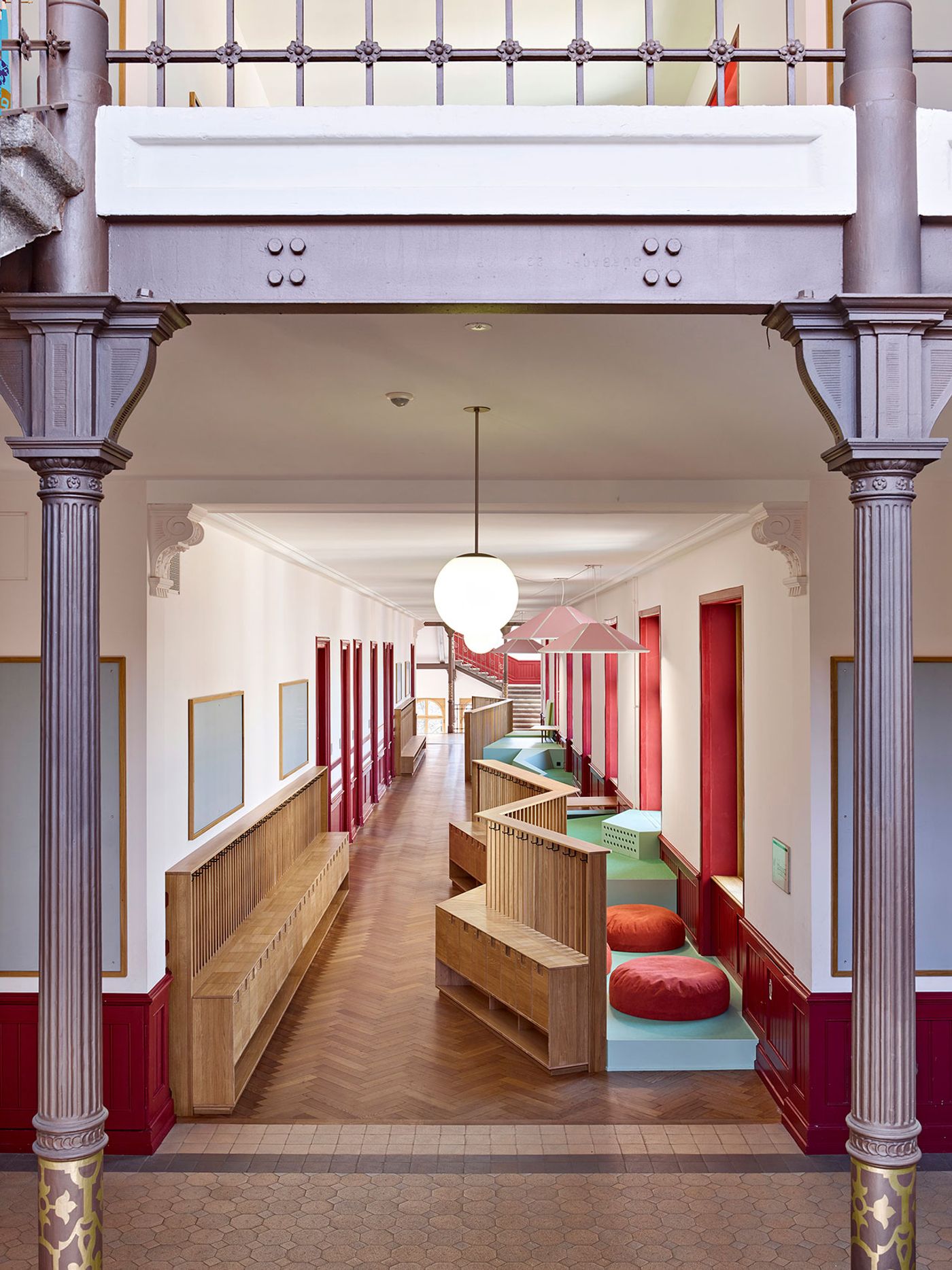
Photo © WEISSWERT.

Photo © WEISSWERT.
Based on both the teachers and students’ ideas and requirements, each corridor is divided into five zones: a central recreation area flanked on either side by a cloakroom and a “landscaped” learning zone which are separated by zigzagging timber partitions. Conceived as portals, the cloakrooms buffer the learning and recreation areas from the staircases, allowing the students not only to leave their coats, bags and shoes behind but also their troubles. Made out of slatted oak surfaces, the zigzagging partitions echo the material and herringbone pattern of the parquet floors, firmly anchoring the intervention into the historic building fabric.
The topography of the terraced learning landscapes shifts along the length of the corridors in order to create a variety of spaces on different levels. Slides, balancing beams and bouncy balls inject fun and games into the learning process, alcoves and niches with names such as the “perch” and the “cave” act as retreats, while various built-in work surfaces allow for individual and group study. This is not to say that everything is strictly designed for a particular use, on the contrary, the designers have opted for hybrid uses; the “lizard tail” for example can be used as a balancing beam, desk or back rest.
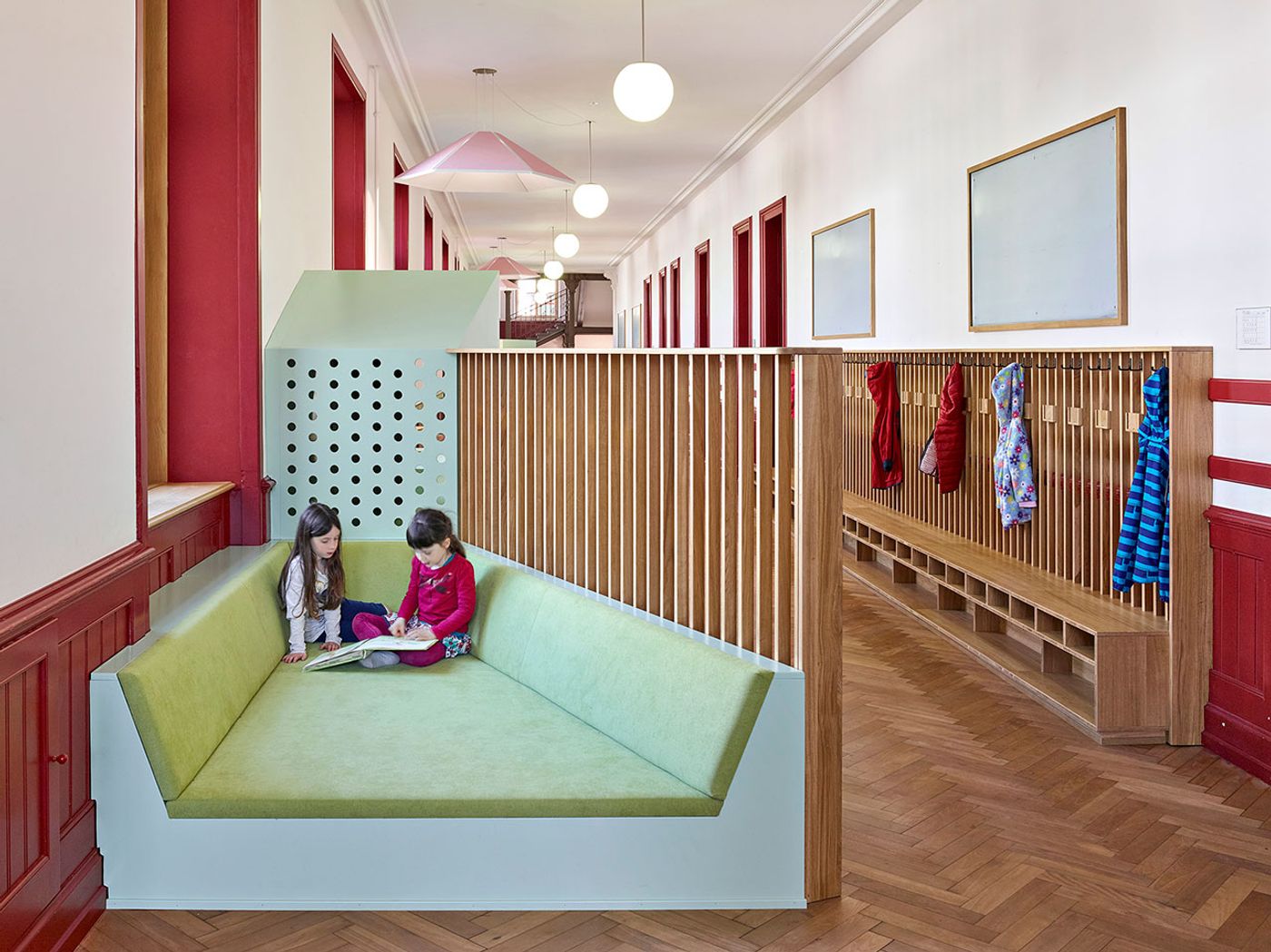
Photo © WEISSWERT.
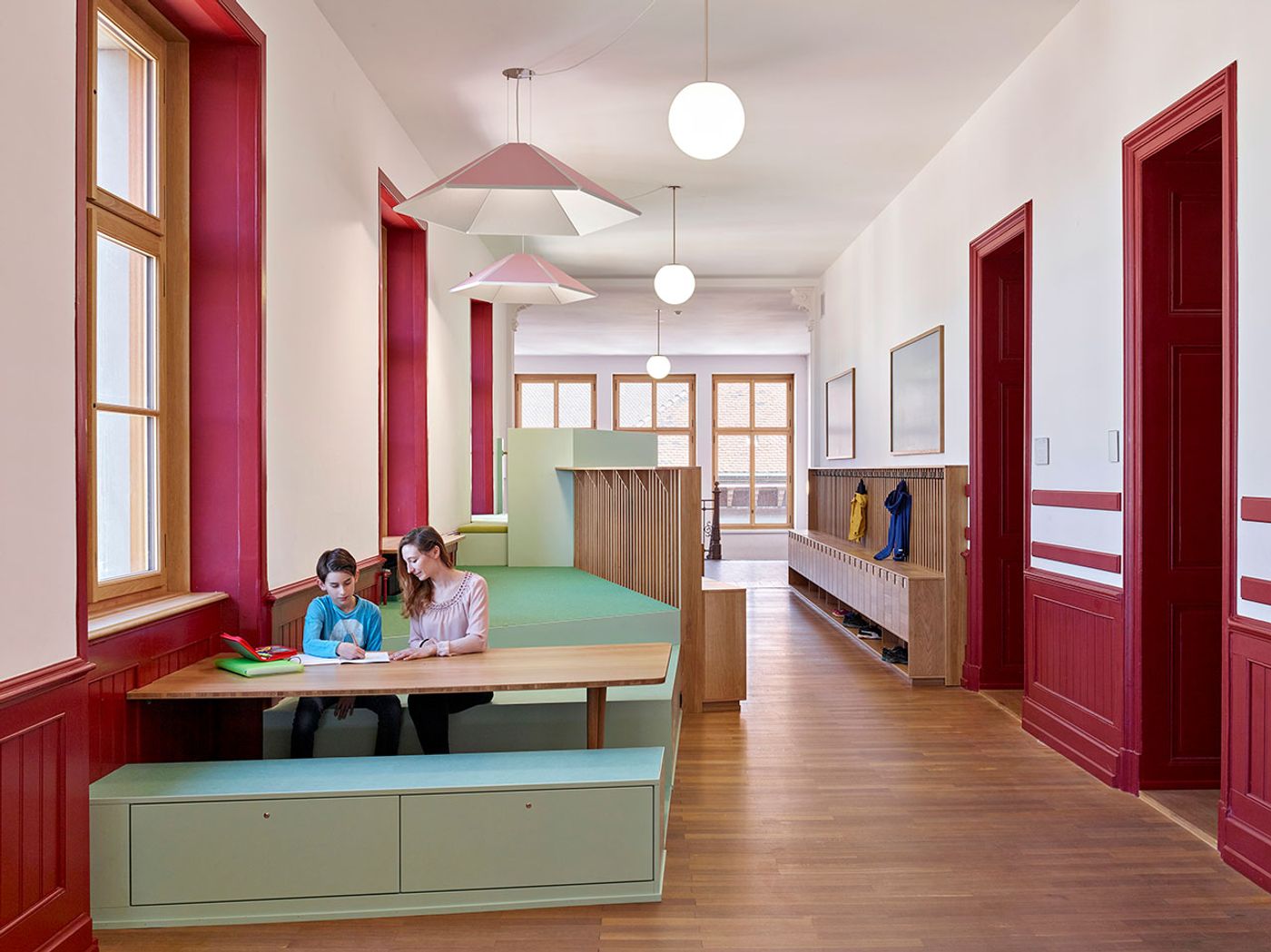
Photo © WEISSWERT.
Unfolding alongside the building’s windows, the learning zones are blessed with plenty of natural light, supplemented by a dynamic lighting system integrated in the acoustic umbrellas that playfully hover above. Featuring a mix of textures such as linoleum, carpet and textiles in green, ranging from shades of pistachio through to lime, which perfectly complement the oxide-red wainscoting, the “learning scapes” certainly stand out chromatically against the stately elegance of the historic building, whilst spatially and conceptually updating the curriculum of contemporary school design.
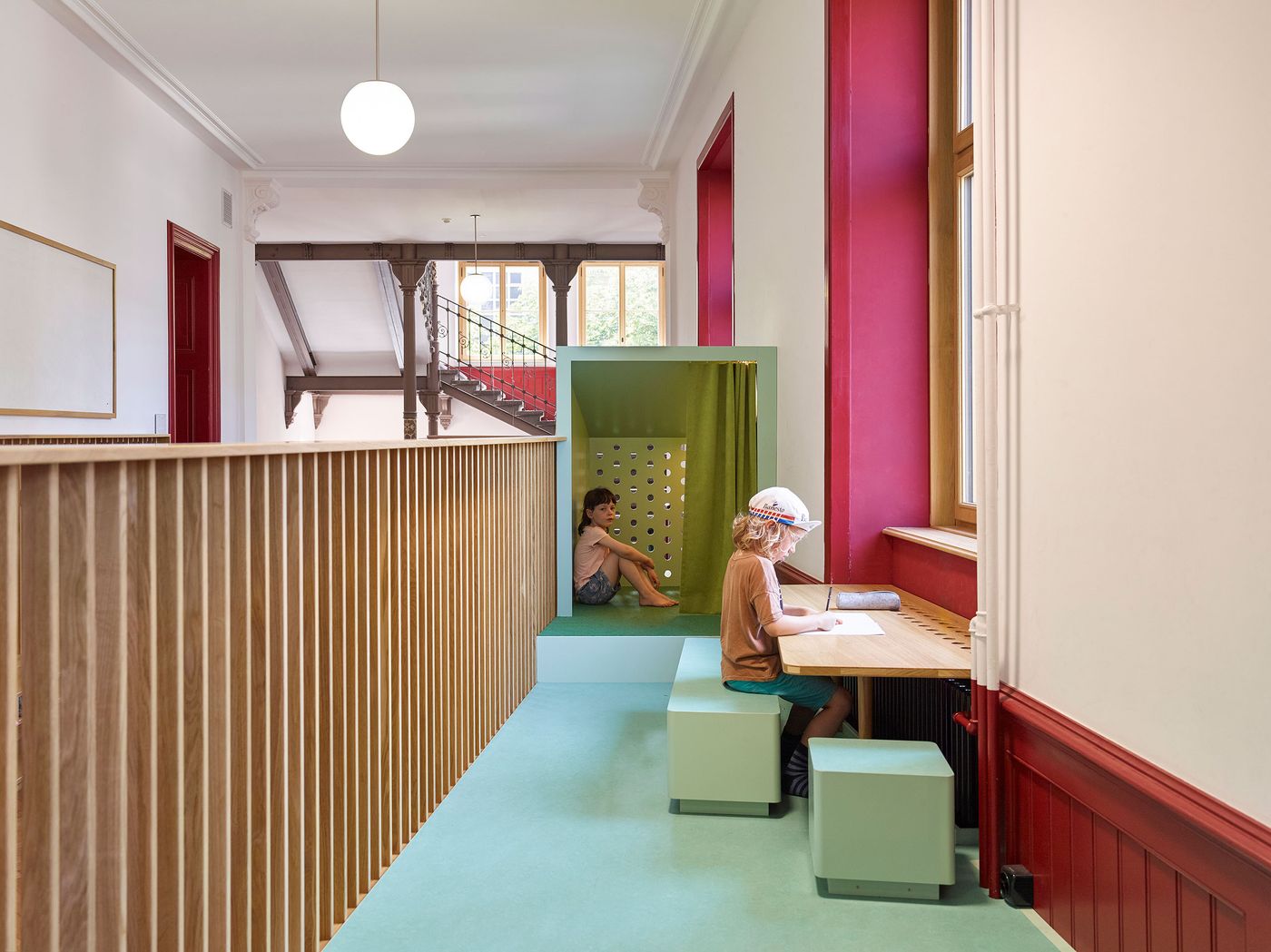
Photo © WEISSWERT.
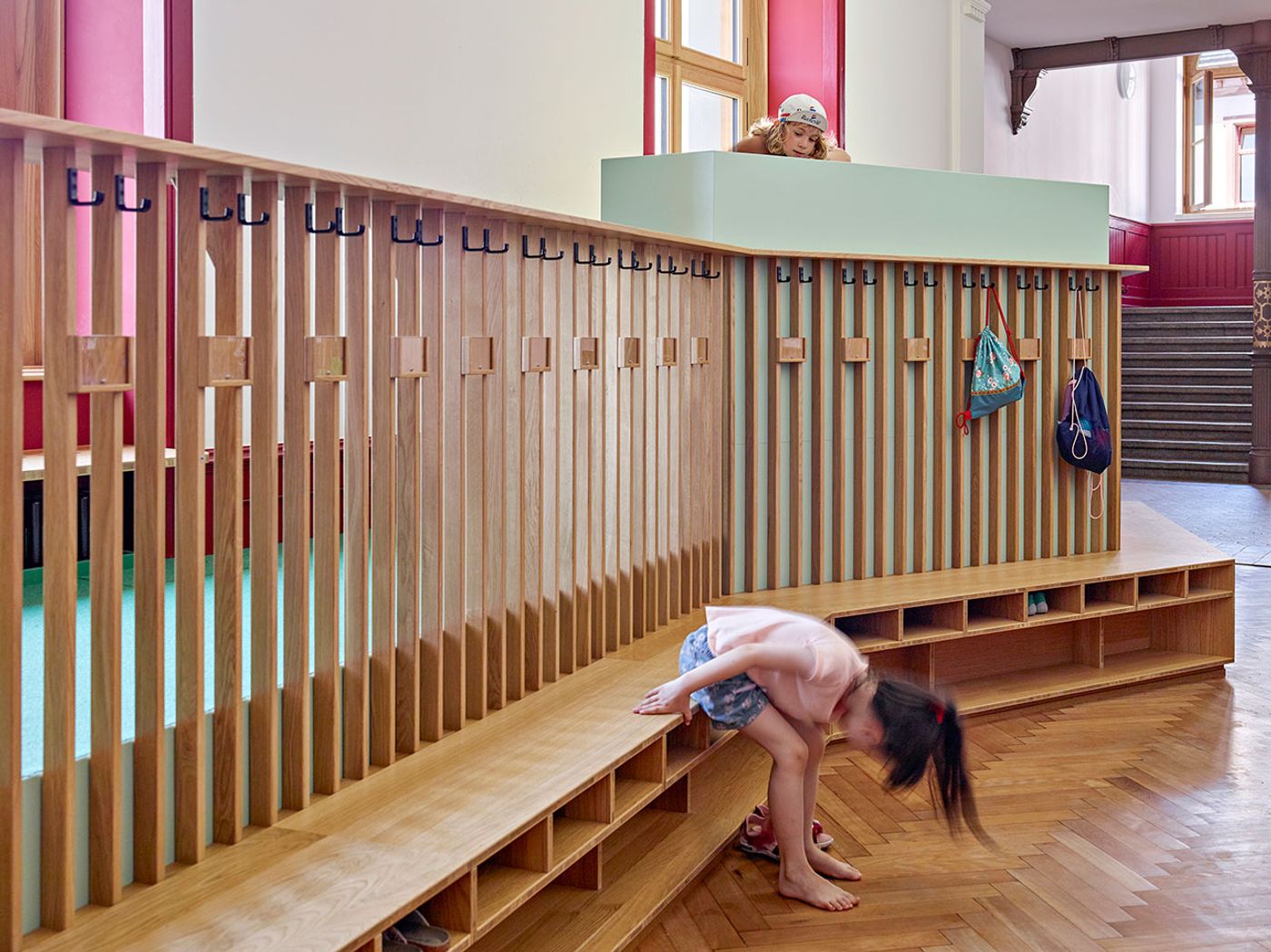
Photo © WEISSWERT.
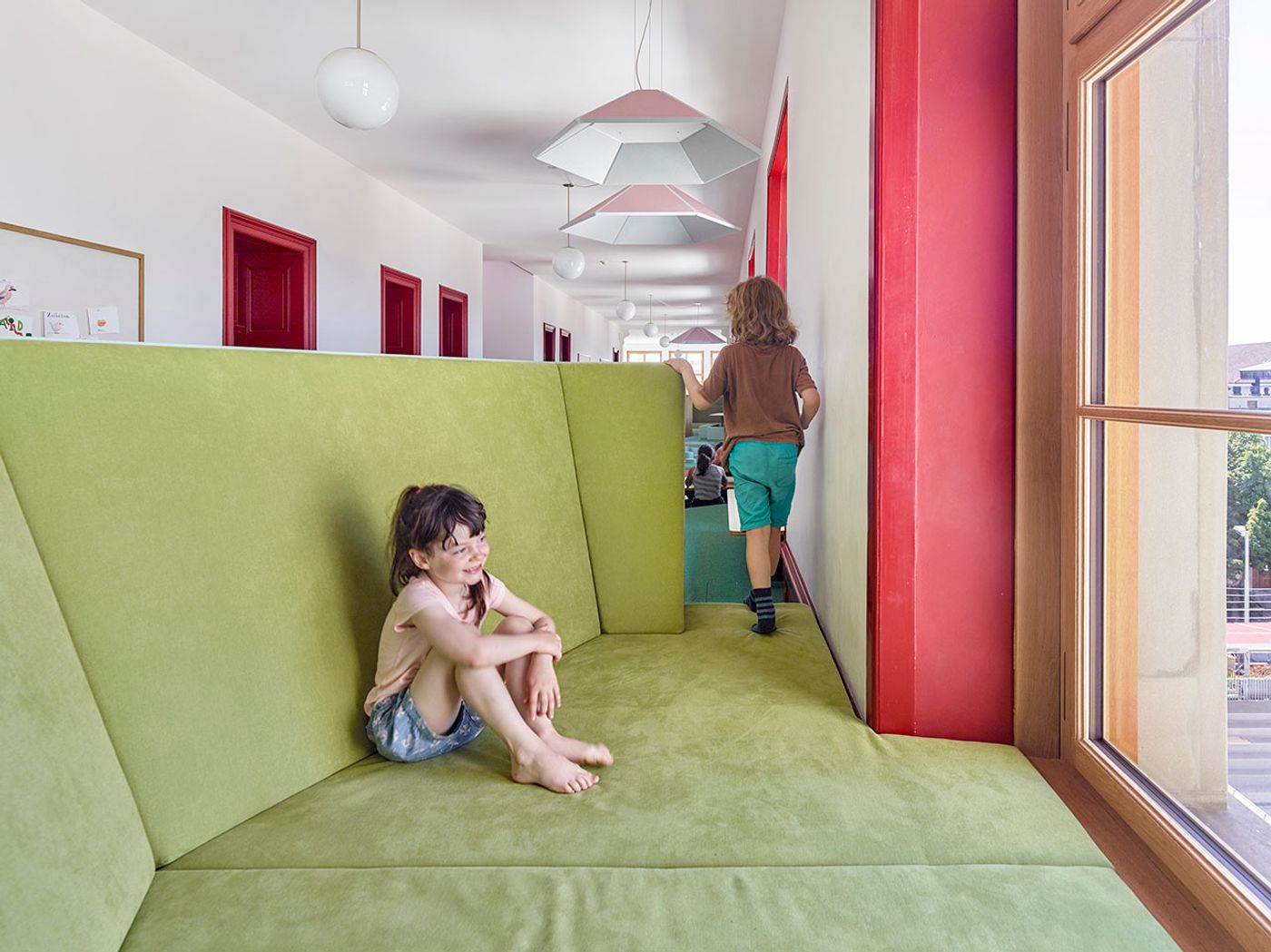
Photo © WEISSWERT.